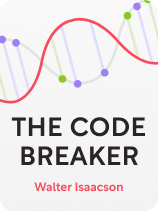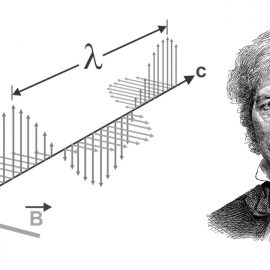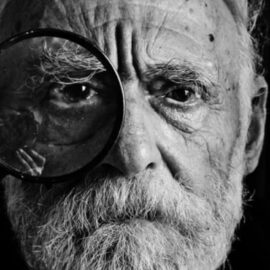

This article is an excerpt from the Shortform book guide to "The Code Breaker" by Walter Isaacson. Shortform has the world's best summaries and analyses of books you should be reading.
Like this article? Sign up for a free trial here.
Who is Jennifer Doudna? How did she develop CRISPR technology, and how did the breakthrough launch her career?
Jennifer Doudna’s journey from a curious child in Hawaii to a Nobel Prize-winning scientist is nothing short of inspiring. Her work on CRISPR, alongside colleague Emmanuelle Charpentier, has transformed the field of gene editing and opened up new possibilities in medicine and biotechnology.
Read on to discover how Doudna’s early experiences shaped her career, the challenges she faced as a woman in STEM, and the intense competition that surrounded the development of CRISPR technology.
Doudna’s Early Life and Career
Who is Jennifer Doudna? She was born in 1964 and spent the majority of her childhood in Hawaii. Because she was in the minority of white children there, she felt like an outsider, and she took refuge in Hawaiian nature. Isaacson explains that two adults in Doudna’s life nurtured her fascination with nature: A friend of her parents, who was a biologist, taught her some scientific basics during nature walks, and her father gave her a copy of The Double Helix (the story of how scientists Crick, Watson, and Franklin discovered the structure of DNA). The book excited Doudna for two reasons: First, it inspired her to investigate why the world worked as it does. Second, it taught her that despite what her teachers said, women could be scientists.
Jennifer Doudna majored in chemistry at Pomona College and went to graduate school at Harvard University. Isaacson explains that at the time, most biologists were preoccupied with studying DNA because they thought it was the next scientific frontier. However, Doudna’s advisor at Harvard encouraged her to focus on RNA. Doudna began exploring ribozyme structure and function, which presaged her work with CRISPR. Then, as a postdoctoral researcher at the University of Colorado, she set out to discover why RNA could be used to edit genes. With the help of her labmate and future husband Jamie Cate, she mapped out RNA’s structure, which helped her understand how it worked.
(Shortform note: Early in her career, Doudna told a biographer that she was drawn to pure science over applied science—she researched RNA because she simply wanted to understand how it worked, not because her findings could prove practical (or even profitable) in the real world. She also said that she found RNA interesting because, according to the RNA World hypothesis, RNA may have existed as the first form of life on earth. Her interest in the origins and evolution of life contributed to her decision to begin working with CRISPR, as she explains in her book A Crack in Creation. As we’ll discuss, despite her devotion to pure science, her CRISPR-related research eventually opened her up to the world of applied science.)
Isaacson explains that with these discoveries under her belt, Doudna was officially an expert on RNA. The University of California at Berkeley offered her a professorship, and she continued to research RNA in that capacity. There, she focused on RNA interference—a process that she hypothesized could be used for gene editing. Doudna’s research on gene editing took a different turn than she expected, though: When a colleague suggested that she apply her RNA expertise to CRISPR, she tasked her lab with learning how Cas enzymes worked by determining their structure. Once they accomplished that, Doudna moved onto groundbreaking research—she teamed up with Charpentier to clarify how the CRISPR-Cas system works.
(Shortform note: RNA interference, also known as RNAi, is a mechanism by which certain cells silence, or prevent the expression of, certain genes. RNAi has therapeutic applications, like silencing the genes responsible for some forms of cancer, but it isn’t used for gene editing. That’s because RNAi targets mRNA transcripts (copies of DNA) rather than the original genes encoded in DNA, resulting in temporary changes. On the other hand, gene editing tools, which include CRISPR and other technologies, target DNA directly, resulting in permanent genetic changes.)
| Women in STEM Must Overcome Unique Challenges In tracing Jennifer Doudna’s career back to her childhood experiences, Isaacson underscores an important truth about how women enter STEM (science, technology, engineering, and math) fields: Positive childhood STEM experiences are paramount, especially for people whose identities are underrepresented in STEM—including women. Experts have identified a lack of female role models in STEM as a barrier to girls’ entry into the field, and studies suggest that supplying girls with role models enhances their STEM competencies and interests. Altogether, these facts may explain why Doudna was inspired by early exposures to science, by Franklin’s role in The Double Helix, and by other female role models throughout her career. Once a woman overcomes initial barriers to STEM entry, including limited access to female role models in childhood, she may still face challenges within the field on account of her gender. For example, experts say that despite some progress toward gender equality, women in STEM change careers more often than men do (which disrupts traditional trajectories of success). This could be due to what’s known as the motherhood penalty—pressure professional women experience to choose between having a career or having children. Marriage can also harm women’s career prospects in STEM if they don’t have supportive partners. Doudna has spoken about how her husband’s support has helped her achieve a healthy work-life balance. |
Doudna Developed CRISPR Technology Alongside Colleagues & Competitors
Isaacson explains that, after Jennifer Doudna helped discover how CRISPR-Cas9 works in nature, she focused on developing the system into a technology for human use. Doudna played a huge role in the development of CRISPR technology, but she didn’t do it alone—both colleagues and competitors helped her establish this scientific innovation. Let’s discuss the contributions each key player made toward the advent of CRISPR technology.
Doudna Collaborates With Charpentier
Around the same time that Doudna began researching Cas enzymes, other scientists were conducting experiments aimed at preventing viral infections in the bacteria used to make yogurt. They discovered that they could insert CRISPR elements into bacterial cells instead of waiting for cells to naturally develop CRISPR-derived immune defenses. The scientists also confirmed that cells’ CRISPR defenses were inheritable. Based on this discovery, the scientific community concluded that it could potentially use CRISPR to create inheritable alterations to any type of gene.
Doudna and Charpentier turned this potentiality into an actuality, writes Isaacson. They realized that, since crRNA determined which genes to cut out of a virus, they could use different versions of crRNA with different targets to edit any segment of DNA they wanted. To simplify this process, they fused together crRNA and tracrRNA to create sgRNA (single-guide RNA) in 2013. The invention of sgRNA transformed CRISPR from a biological process into a gene editing tool. They experimented with single-celled organisms and proved that they could edit genes at will. Isaacson explains that other gene editing tools already existed, but CRISPR gene editing technology quickly displaced them because it was more straightforward and efficient.
Doudna Competes With Zhang (and Other Scientists)
Isaacson explains that, although Doudna and Charpentier successfully demonstrated that they could edit the genes of single-celled organisms, it wasn’t immediately clear that the same process could be used in more complex cells (like human cells). As soon as Doudna and Charpentier published their paper on CRISPR gene editing technology, scientists around the world began competing to become the first to use it in human cells. Doudna’s primary competitor in this race was Feng Zhang, a Harvard-educated biochemist with expertise in earlier forms of gene editing technology.

———End of Preview———
Like what you just read? Read the rest of the world's best book summary and analysis of Walter Isaacson's "The Code Breaker" at Shortform.
Here's what you'll find in our full The Code Breaker summary:
- The fascinating story of the groundbreaking CRISPR gene editing technology
- Why CRISPR presents scientists and citizens with serious moral quandaries
- How CRISPR has already changed life as we know it—and how it has the potential for even more






